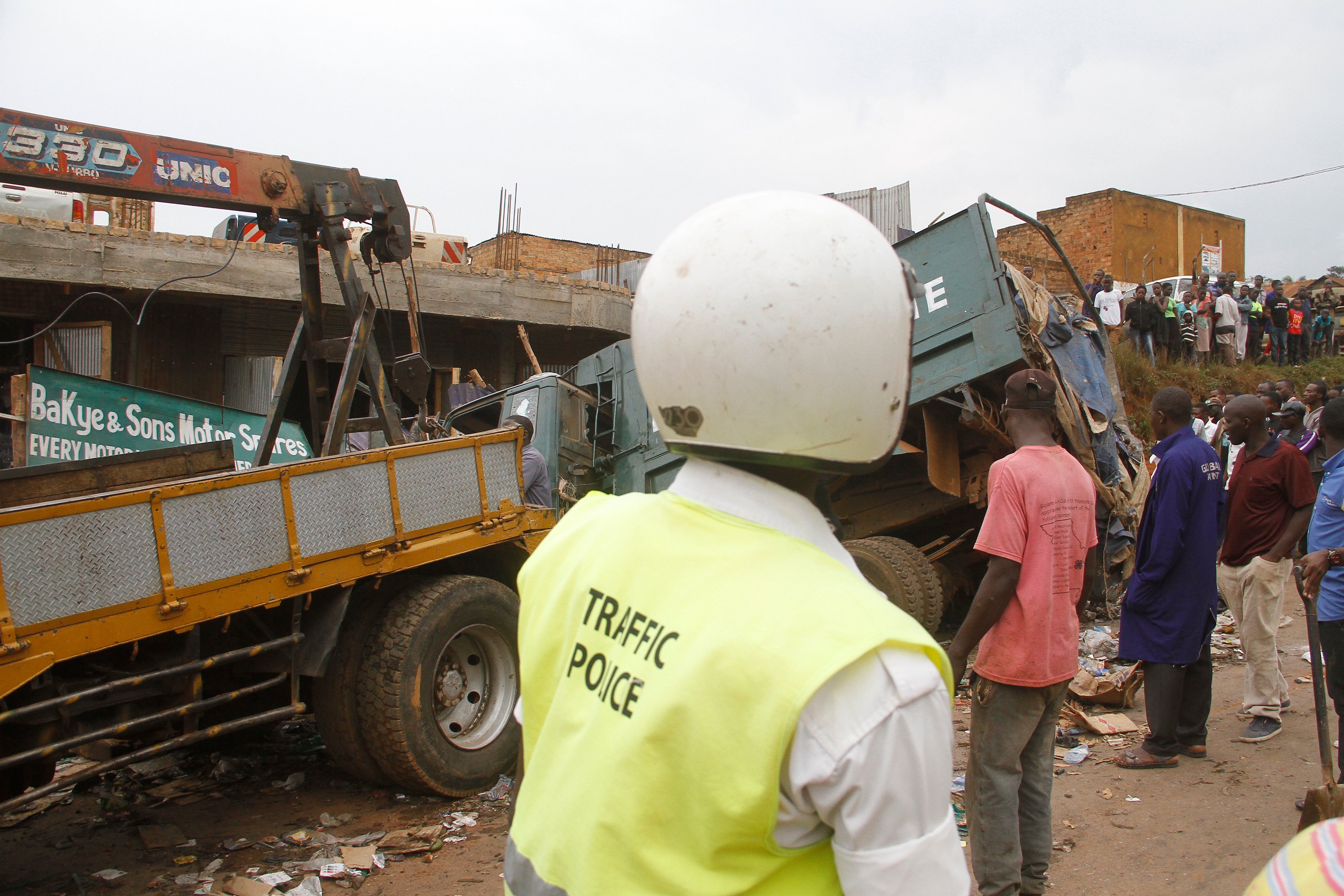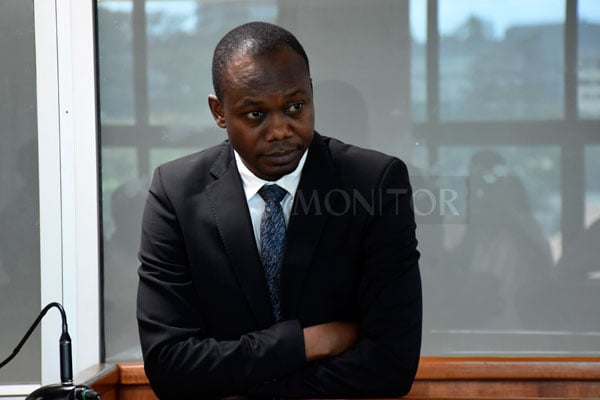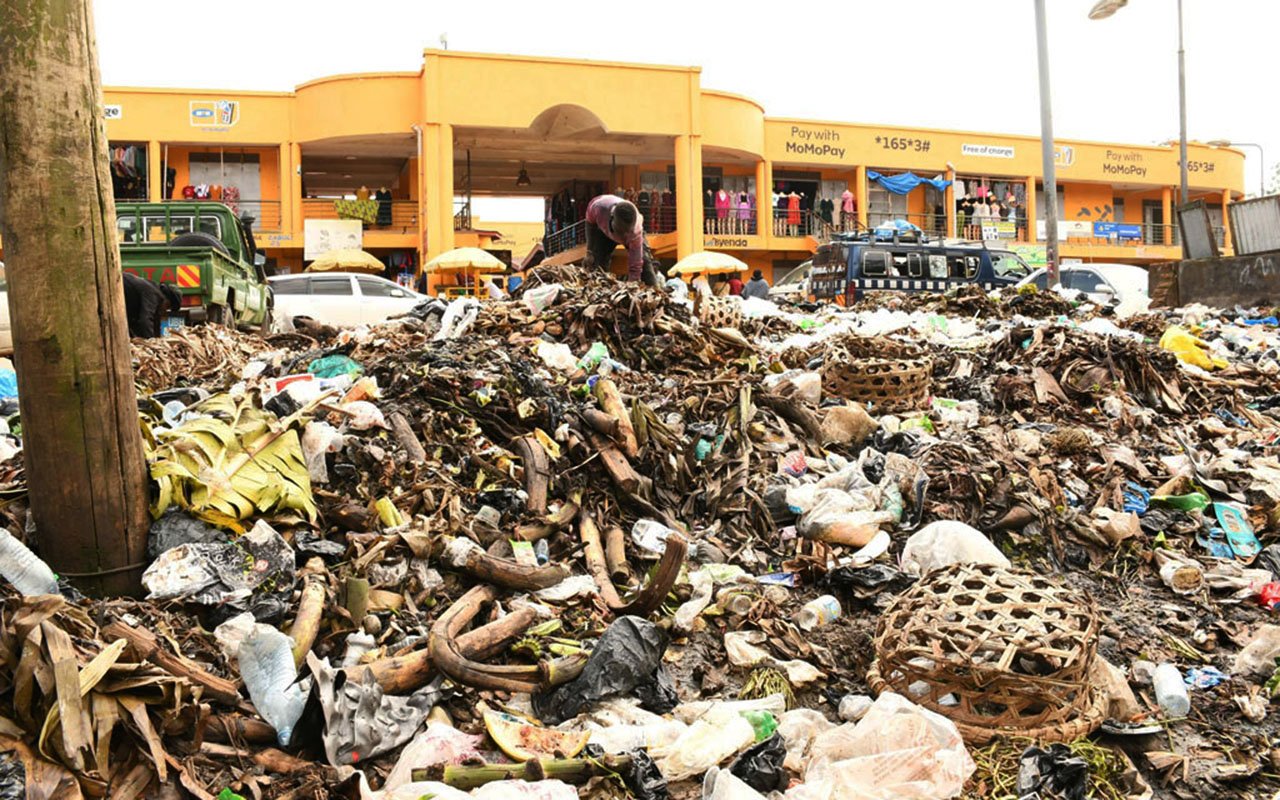Prime
60% of vehicles don’t have third party insurance

A traffic police officer looks at a wreckage after an accident. A motor third-party sticker is designed to safeguard the vehicle owner from liability for injuries or deaths resulting from accidents. PHOTO/ABUBAKER LUBOWA
What you need to know:
- Did you know that more than 1.5 million vehicles on the roads don’t have any appropriate insurance cover? Mr Jonan Kisakye, the chief executive officer of Uganda Insurers Association, told Prosper Magazine’s Ismail Musa Ladu that this poses a huge risk to vehicle owners, the public and the government who will have to deal with the medical expenditure on treatment of victims of uninsured vehicles and loss of revenue arising from noninsurance of more than 60 percent of vehicles on the road. Excerpts…
Why are motorists reluctant to secure protection in case of an accident?
Statistics that we have indicates low uptake of a motor third party. This kind of insurance protects you and your vehicle against financial losses in case of an accident. It covers the costs of any damage or injuries caused to you or other people.
Last year’s statistics show just about 550,000 motor vehicles and motorbikes had motor insurance.
Of that, private cars make up just about three-quarters of that while commercial vehicles categorised as for commercial purposes comprise about a quarter of that – which is about 120,000 vehicles.
This is sad news. According to estimates from the Ministry of Works and Transport, motor vehicles, including motorcycles are in the range of 2.5 million upwards.
Going by these statistics, not even 50 percent of motorists have a motor third party in the country, yet this is a mandatory cover by law. Every motorist on the road should have a motor third-party sticker.
This motor third-party sticker is designed to safeguard the vehicle owner from liability for injuries or deaths resulting from accidents, including pedestrians or passengers in the vehicle.
If it is a legal requirement for motorists, why should it matter to me as a pedestrian?
Every single citizen deserves protection in case of an accident. It is challenging to handle medical bills without coverage, which could have easily been covered by compensation if you had proper protection.
It should be in your interest to verify that the vehicle you are boarding has a motor third-party sticker, as it ensures you will be compensated in the event of an accident.
What explains the low uptake yet it looks like a no-brainer?
There are a couple of reasons, including misinformation. People don’t seem to understand how insurance operates. Insurance pools resources from many people to compensate those in unfortunate situations.
Insurance is the oil that runs the economy – look at it as the engine that runs the vehicle.
A third party is meant to protect you, the vehicle owner. For every accident, in case of an injury or death, the maximum payout is Shs1 million. If there are more than 10 people, the maximum payout will be Shs10 million, yet a motor third party sticker costs less than Shs70,000, and for a motorbike, it costs about Shs45,000. Of that, about Shs35,000 is stamp duty and VAT of 18 percent.
So the actual cost to the insurer, that is the basic premium, is about Shs4,000. But the benefit is Shs1 million in the event of an accident. So, you have given the insurer Shs4,000 for the benefit of Shs1 million.
Therefore, for the insurer to compensate one person, they will need to sell about 250 stickers or more than that. It means that for every 250 motorbikes, my liability is Shs250 million.
If you look at our retained premiums, motor third parties contribute about 1 percent. It is not the biggest contributor to our premiums. There is a lot of misconception that it is our cash cow. It isn’t.
For example, a private car motor third party costs about Shs68,000, including stamp duty and Value Added Tax (VAT) of 18 per cent. The base premium is about 22,000. But for a benefit of Shs1 million to a maximum of Shs10 million, you can see where most risk is shouldered.
The misconceptions coupled with the archaic or obsolete law - 1989 law – Shs1 million then is not the same as it is now. The 1989 law needs to be reviewed urgently. We shall support the regulator on this because we think it improves the limits of liability. Currently, the benefit of Shs1 million doesn’t entice many people and we think it is limiting.
With the review, we are also looking at introducing property damage and insurance of government vehicles which is currently excluded from this law, yet they cause accidents.
You are also being accused of avoiding payment of claims. Is this so?
Look, we exist to pay claims. We don’t fear paying claims. Our statistics for paying claims are clear. All you need to do is to compare banking and insurance. Look at the profits of the insurer, writing over Shs200 billion in return premiums and pay attention to their bottom line. How much are they taking home? Of the Shs200 billion they have collected from you? You will be surprised that none of them has a profitability of Shs50 billion or Shs100 billion.
So our business is to oil the economy, keep businesses running and be rewarded by a small component of what we collect to run the businesses. Most of the profit levels are in the range of Shs3 to Shs4 billion yet they collected way more than that.
Another thing, if you are the motor third party, it is your responsibility as the motor vehicle owner to notify the insurer of any accident that has happened.
What is the role of enforcement?
The insurer (company) has responsibilities, but the enforcer of the law is the police. We have seen the tendency for kitu kidogo – giving and taking bribes and found out that bribes are actually more expensive than the cost of motor third party stickers. Imagine you driving from Kampala to Masaka and you have to offer kitu kidogo three times en route your way, which could be the amount you need for a sticker for a whole year.





